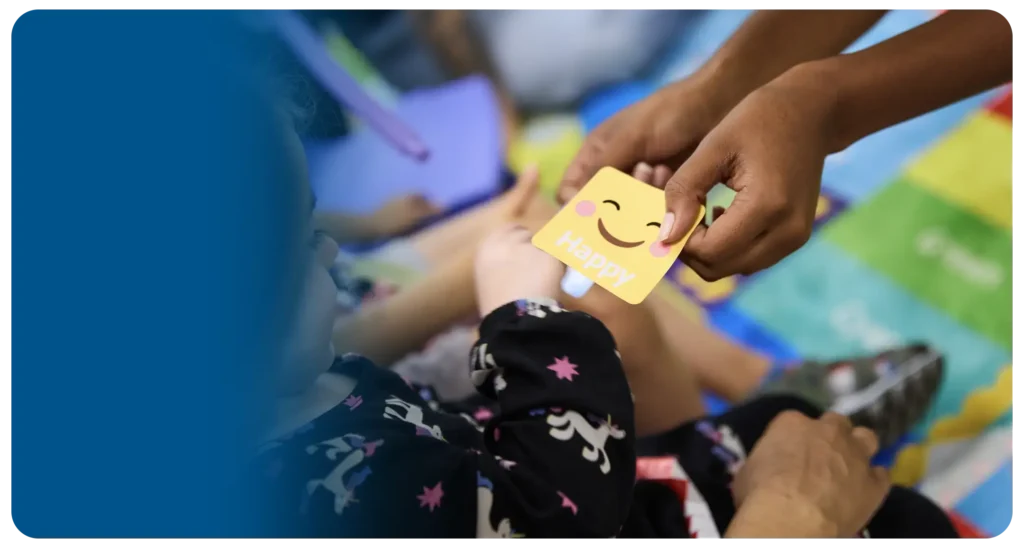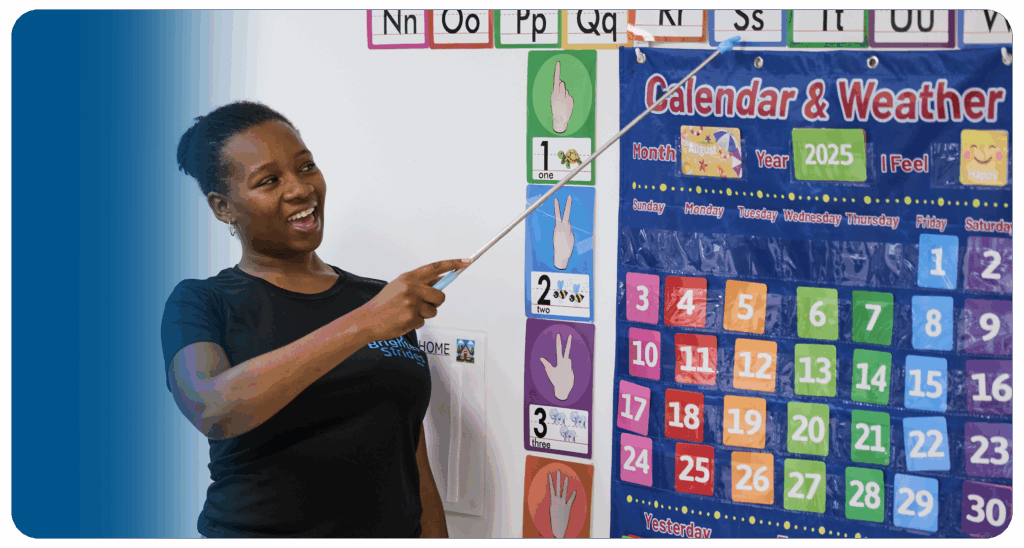Decades of research have given ABA therapy a strong scientific backbone, offering proven ways to help children develop skills they can use in everyday life. But science alone isn’t enough.
As the field has matured, we’ve had to look closely at how existing frameworks are applied. We’re rethinking practices that once prioritized compliance over connection, refining methods to reflect what children and families truly need.
Today, ABA is evolving into something richer and more responsive. Evidence still guides every decision, but therapy now centers on each child’s strengths, preferences, and overall well-being.
At Brighter Strides ABA, we bring that approach to our daily practices — drawing on proven methods while tailoring care to the specific routines and goals of each child and his/her family.
The foundations of ABA therapy
The principles that drive ABA therapy have stayed remarkably steady, even as methods have evolved. Chief among them is reinforcement: pairing a new skill with something meaningful so the child is motivated to use that skill again.
Imagine a child tapping the keys on a toy piano. We pause the sound, prompt “piano,” hear the word, and bring the music back. Through that exchange, the child forms a direct connection between the word and the action, encouraging them to say “piano” the next time they want to play.
Staying anchored in evidence gives ABA therapy its strength. Because the principles are measurable and adaptable, we can carry them from a playful moment like the piano game into daily routines to help children use new skills at home, at school, and in the community.
The evolution of ABA
While ABA’s scientific foundation has remained stable, its application has changed considerably over the past decade. The field has moved away from drill-heavy, compliance-focused models toward approaches that build connection, supporting each child’s growth in ways that feel natural and motivating.
Listening to autistic voices has been central to this shift. Real feedback prompted the field to confront past harms and develop practices that invite participation, honor choice, and value quality of life alongside measurable progress.
The benefits of a compassionate, play-based approach
As ABA has moved toward frameworks that respect each child’s individuality, play-based learning has become a defining feature of therapy sessions.
Children learn best when they’re engaged in activities they genuinely enjoy: music, movement, storytelling, construction, and imaginative games. Play invites natural communication, builds trust with therapists, and accelerates learning because skills are practiced in contexts that feel meaningful.
When sessions are enjoyable and collaborative, children make faster progress and carry those skills into everyday life. Families also tell us their children look forward to therapy — and we see it, too, in more spontaneous communication, more flexible problem-solving, and more joy.
The future vision for ABA therapy
While play-based approaches show how far the field has come, ABA’s next chapter centers on the factors that influence a child’s daily experience of therapy — where science, compassion, and access meet.
At Brighter Strides, we see four pillars shaping what comes next:
- Hyper-individualization
No two children share the same strengths, needs, or goals, so their therapy shouldn’t look the same. For one child, learning to ask for a monster truck might open the door to independent play and social connection. For another, mastering the use of a spoon may matter far more.
We’re moving away from cookie-cutter plans and an overreliance on standardized assessments. Instead, we ask a guiding question: Is it socially significant? The goal is to improve the child’s everyday life — whether that means building friendships, joining family routines, or independently getting ready for school.
- Greater inclusion and dissemination
Children thrive when they’re accepted and understood in every part of their lives — not only in therapy. ABA can help by building practical skills and by educating the wider community about what autism and ABA really mean.
We want autistic individuals to be visible and valued in schools, workplaces, neighborhoods, and in the media. That starts with sharing accurate information about ABA’s scope.
Too often, the referral reports we receive frame ABA only as a way to reduce challenging behaviors. In reality, ABA supports communication, social connection, daily living, and leisure skills — progress that reaches far beyond behavior management.
- Cultural competence
Every family brings its own culture, values, and daily routines to therapy. What feels natural and important in one home may not fit another — effective ABA must reflect those differences.
Culturally responsive care means listening first. We ask families about their priorities, traditions, and expectations, then tailor goals and teaching strategies to align with those insights. A mealtime skill, for example, might look different depending on a family’s eating habits, or a social goal might change to respect language and customs at home.
By honoring culture as part of the treatment plan, we build trust and create programs that families can truly embrace, supporting sustainable progress beyond the therapy setting.
- Insurance reform and accessibility
Families deserve care plans built around their child’s needs, not just the boxes an insurance form happens to check. Yet insurance requirements can sometimes limit goals to what’s easiest to document or measure.
We advocate for policies that recognize the expertise of Board Certified Behavior Analysts (BCBAs) and the value of socially significant goals. Skills like managing morning transitions or expressing discomfort when something feels wrong should carry as much weight as more standardized objectives.
When insurers and clinicians work together to prioritize meaningful outcomes, children gain faster access to services, therapists can individualize treatment with confidence, and families spend less time fighting paperwork and more time celebrating progress.
How do we get there?
Progress toward individualized, compassionate ABA therapy doesn’t happen by chance. It takes collaboration at every level. BCBAs, Registered Behavior Technicians (RBTs), and families all play a part.
BCBAs bring the clinical expertise to design and adapt treatment. Ongoing education, research, and mentorship keep their practices current and responsive, ensuring that socially significant goals remain at the center of every plan.
RBTs are on the front lines, spending the most time with children. Their daily observations and ideas drive change. When RBTs share what’s working — and what isn’t — they help shape more effective, child-centered programs.
Families know their child best. Their insights guide goal selection, reinforce skills at home, and help therapy translate into daily life. Parent participation, from celebrating small wins to practicing new strategies, is critical for lasting progress.
When each group shares its perspective and works together, ABA advances as a field — and children receive care that is truly individualized, inclusive, and effective.
The path ahead
ABA is, at its core, a human service. The future of the field depends not just on new techniques, but on how we train, mentor, and support the people who deliver them.
At Brighter Strides, we see this as the real work ahead: investing in people, fostering curiosity, and encouraging stronger collaboration between clinicians and families.
Through all of these changes, our goal is constant: improving the quality of life for autistic individuals and ensuring their voices guide how ABA continues to grow and support their progress.
Join us in shaping what’s next
If you’re a BCBA or RBT who believes in compassionate, evidence-based care — and you want to work with a team that listens and innovates — we’d love to meet you.





